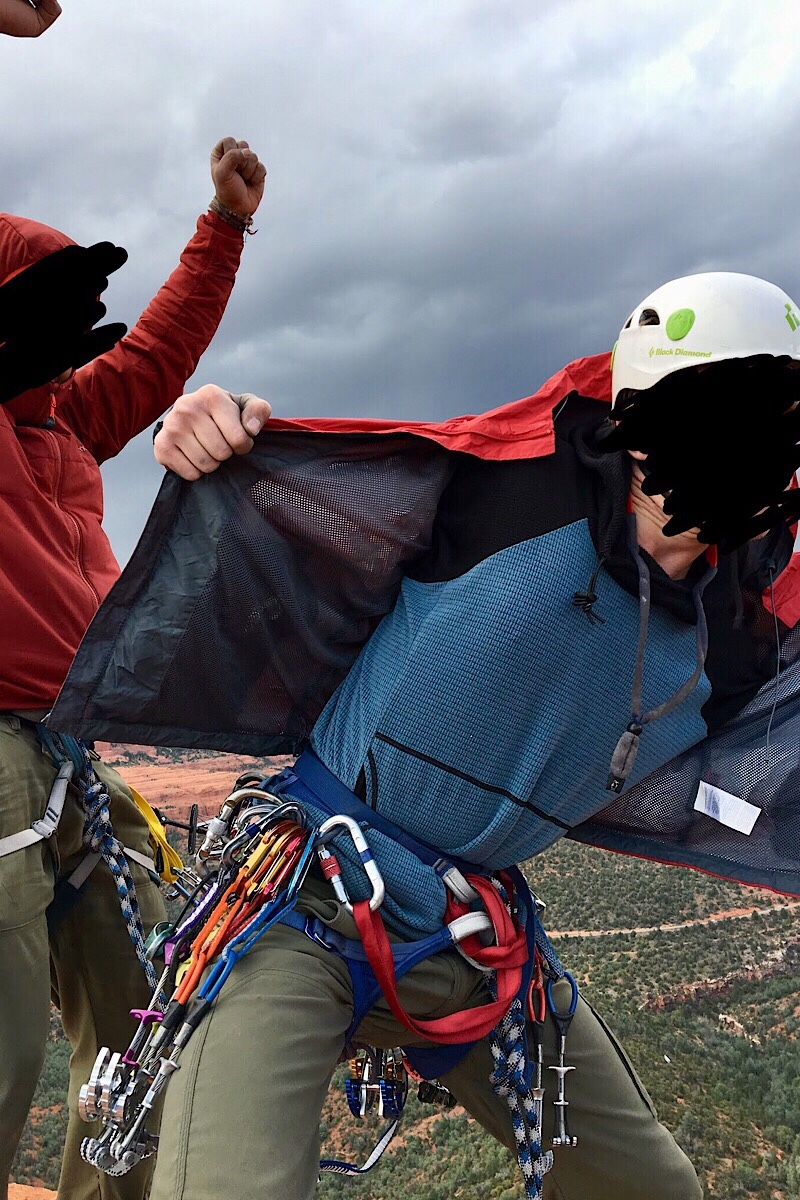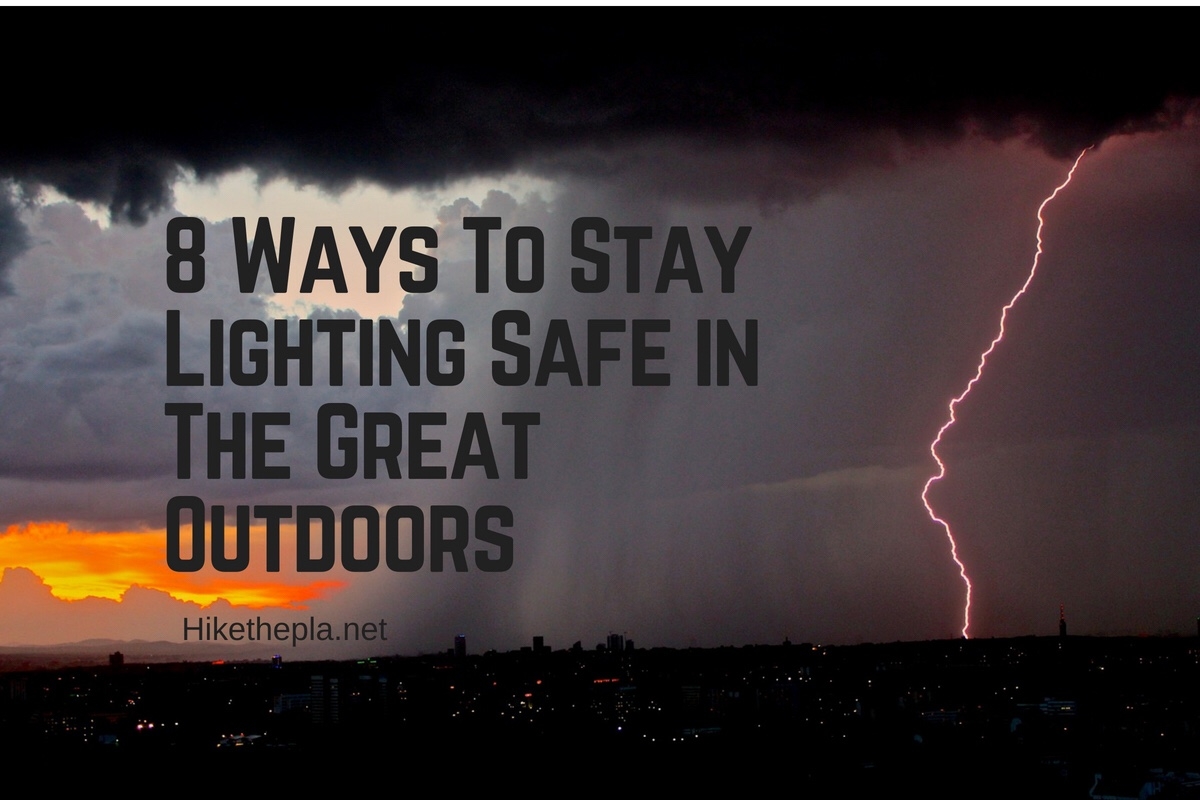When recreating in the great outdoors, there are several risk factors that are not as commonly found in an urban environment. To stay safe, an outdoor adventurer must learn what these are, and how to protect oneself. One such risk factor is lightning strikes.
Lightning is loud and scary. It is electricity that comes down from clouds to strike the ground. A lightning strike on a human, can at best, cause burns on the body. At worse, it is instant death.
It is said that the best way to prevent being struck by lightning is to seek shelter indoors. Unfortunately, this is rarely an option when out in the wilderness. Luckily, by observing some simple rules, of which I have outlined here, you can greatly reduce the risk.
Though lightning strikes on humans are rare, educating oneself is essential to staying safe, and preventing a lengthy evacuation. After several close calls, the author has taken the time to learn many of the important point of lightning safety. After all, lightning is his greatest fear. Now, he hopes to share with you what he has learned to keep you safe. Please, educate yourself with Trekker Timmy’s list of 8 Ways to Stay Lightning Safe in the Outdoors.
1. Learn The Different Types of Lightning Strikes
Table of Contents
Try to imagine a bolt of lightning striking a human being. Usually, this conjures an image of a streak of electricity striking a person directly. This sort of scenario is typically what is depicted in movies and television. The truth about strikes is a little different.
A direct hit from a lightning bolt is actually somewhat rare. Much of the time, people are injured in less direct ways. Typically, injurious strikes manifest as a current traveling through the ground, or a “splash”. The numerous types of lightning strikes are:
• Direct Strikes-As the name suggests, a direct strike occurs when lightning strikes a person directly. Though these are one of the least common lightning strikes, they are the most deadly. A direct strike can also include blast injuries, or a side splash, where lighting will “jump” from an object, to a person.
• Ground Current-Occurs when lightning strikes the ground, and the current radiates outward from the strike location. Persons standing in the path of the current can be shocked. This is probably one of the most common types of lighting strikes, and are responsible for the most injuries. It has been suggested that wearing rubber soled shoes, or insulating yourself with a map can protect you.
• Secondary Injuries-A victim is injured from a fire, explosion or other accidents caused by a lightning strike.
2. Avoid High and Exposed Points
This may be lighting safety 101, but it deserves repeating. In a cloud to ground strike, lightning will seek out the fastest way to the earth, which will most often be a prominent high point. Mountain peaks, hilltops, rock spires, mesas, buttes, trees, and tall buildings are all likely recipients of a shock from on high. If you are enjoying the outdoors, staying clear of these points will greatly minimize your risk of being struck.

Unfortunately, most of the fun things to do outdoors often take place on said exposed points. Climbers seek out big, exposed walls, hikers love Peak bagging, and mountain bikers need to get high so that they can get low. If you are up high when a storm rolls in, do what you need to do to get down in a fast (but safe) manner.
On the flip side, high points can help to “shield” you from strikes. Hang out in the lowlands, and the big, tall landmarks will take the heat for you.
3. Keep an Eye on the Weather Forecast, and Don’t Take It for Granted
Always check the weather before you go outside. This should be common sense. Even if the forecast predicts clear, beautiful days, always retain a sliver of skepticism. In my case, that sliver was a small, brief, insignificant chance of rain on an otherwise sunny Spring day.

Sitting atop a prominent desert spire, we were readying our descent when a storm blew in. I did not realize how close we were to being struck, until I noticed a that a metal carabiner began to buzz, presumably from the electrical current in the air.
The forecast that morning predicted a slight chance of rain, which manifested as a scary thunderstorm. If there is any doubt about the weather, consider postponing your adventures for another day.
4. Know the Warning Signs
Modern weather forecasting is an important and useful tool, but you should also know how to predict the weather based on your own observations. Often, a change in the weather is preceded by its own, distinct signs. Learning to read these can help to make your experience happier and safer.
This article, from Bass Pro Shops, outlines many of the common warning signs that precede a change in the weather. Some of the warning signs that I have personally experienced are:
• Thin, Wispy Clouds-Thin, Wispy Clouds on the horizon often signal an approaching storm front.

• Sudden Gusts of Wind
• Sudden Changes in Temperature
5. Take Heed of Thunder, Even if It is Far Off in the Distance
Just because the Storm seems far away, doesn’t mean that you should let your guard down. If you hear thunder in the distance, that means that the storm is close by.
Thunderstorms can move in very fast, quickly propagating overhead, and In a phenomenon known as “Anvil Lightning”, it is possible for Lightning to strike many miles away from a cloud.
6. Avoid Wide Open Areas
Big, wide open areas, such as a field or a meadow, are not ideal places to be during a thunderstorm. These environments leave you exposed, where you often find yourself to be the tallest object around. When possible seek forested or hilly areas to minimize the chance of a lightning strike.
7. Learn the Lightning Position
If you do find yourself stuck in the middle of an intense lightning storm (I have), it is possible to protect yourself by assuming what is known as the Lightning Position. The Lightning Position is a crouched position theorized to minimize the chance of being struck by lightning.
Basically, one will crouch while standing on their tip toes, keeping their heels together, and their head down. This is designed to shrink your profile, making you less of a target, and by keeping your heels together, you create a pathway that will allow ground currents to bypass the rest of your body. Try assuming this position, and you will find that it is difficult to hold for long.
In this NOLS blog post by Tod Schimelphenig (of NOLS WIlderness Medicine fame. Related: 17 Things to Know Before You Take Your NOLS WEMT), he states that the efficacy of the lightning position may be dubious, and that it should only be used if you cannot take other, more sound precautions.
8. Be Careful of Lakes and Shorelines
Lakes and shorelines are a common place for people to be struck. These areas are prime targets because they are typically wide open, and that water makes for a good conductor of electricity. People in water, both in watercraft and swimming, have been struck.
When lightning strikes water, it can travel far, but the question of “How far?” is not clear. It is best to just retreat to a more sheltered area in the event of a storm.
- The Best Campsites Around Big Bear California - February 26, 2021
- Hiking to the Hollywood Sign Via the Brush Canyon Trail - July 13, 2020
- Dirt Cheap Hiking and Backpacking Gear: The Most Affordable Gear on the Internet - July 4, 2020
